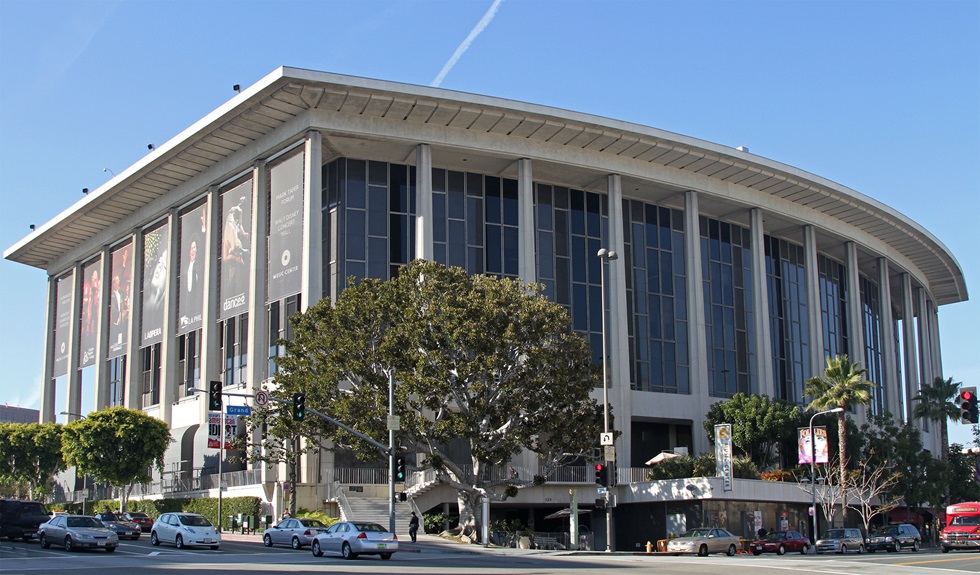
The Los Angeles housing crisis has reached epic proportions and continues to deteriorate. The city, according to a study by the federal housing agency Freddie Mac, is short 400,000 homes with an estimate of over 75,000 homeless in L.A. County and over 46,000 in LA, a rise of 10% last year. The city also leads the nation in overcrowding with 11% of homes having more than one person per room and with many living in garages and attics.
There are multiple reasons for this, but two recent studies agree that the primary driver of people losing homes and of having to flee the city is the ever-increasing price of buying private homes and renting apartments, each no longer affordable with low salaries and inflation, such that in California the median price of a two-bedroom apartment is three times that of the median monthly salary.
One of the issues in the recent writers’ strike was members of the union’s claims that they could no longer afford to live in the city on ever-declining salaries, while one executive stated that the goal of waiting out the strike was to drive union members from their homes and apartments. This is a problem nationwide: a recent Harvard study revealed that at least half of all Americans cannot afford their rent.
The problem has been with us for a long time and can be attributed to multiple local and global factors, but a viable solution, that of building affordable public housing, was debated and squelched in the early 1950s in a period where Mexican, Black, and Chinese as well as poorer white working-class populations were being kicked out of their homes in the drive to create “modern” Los Angeles, a syndrome replicated in many cities across the nation.
That drive was largely engineered by a small group of the city’s elite led by the Chandler family, owners of the Los Angeles Times, which used the rhetoric of the Cold War to justify this, as David Harvey terms it, “accumulation by dispossession” and to push an anti-union, anti-communitarian agenda of single family homes in a suburban sprawl.
The implementation of these policies is the subject of my novel, The House That Buff Built, where the detective Harry Palmer, caught up in trying to resist these policies, shows how the real estate industry’s maxim of “location, location, location” might in this period better be thought of as “looting, looting, looting,” effectuated not in the streets but in the suites.
Redlining in the “apartheid” economy
Part of the problem is the role of systemic discrimination, which continues today though in sometimes different disguises. A key institutional component of housing segregation was and continues to be redlining, where either landlords would not rent or banks would not loan to populations in the “red” areas of maps drawn up by the Federal Home Owners Loan Corporation in the 1930s. Leases in the “green” areas contained “restrictive covenants,” where owners could refuse people of color.
When that public practice was outlawed by the Supreme Court in 1948, private owners still could refuse to rent. They organized homeowners’ associations to band together to ensure wealth generated and passed down through housing remained in white hands until today, a condition which endures in what the economist Michael Hudson calls an “apartheid” economy. The ’50s term, derived from the U.S. relation to the socialist countries of the USSR and China, was “containment,” here meaning keeping minority populations in their poorer neighborhoods and not letting them move out to “contaminate” wealthier neighborhoods around them.

In the novel, Harry is told of a city official who explains in openly racist language the city’s refusing of federal funds for poorer areas, claiming “there are no slums…only Negroes, Mexicans, Chinks, and Japs in those neighborhoods and they should be forced to get along on their own.” Harry is told that redlining works “in conjunction with the Klan to keep unwanted populations out. One method of discrimination is institutional and the other is personal and individual.”
Chandler mania
The main contributor to the housing crisis is the legacy of the Chandler family. Los Angeles has been described as “a real estate conspiracy” and, if so, the Chandlers were the main conspirators. “A great deal of Los Angeles as it appears today,” Joan Didion wrote in 1990, “derived from the impulse to improve Chandler property.” Their organ The Times used its political sway to campaign against public housing. The paper was so laughably one-sided that S.J. Perlman, on a train stopover heading west, claimed he “asked the porter to bring me a newspaper and unfortunately the poor man, hard of hearing, brought me the L.A. Times.”
The Chandlers, who promoted expansion of single-family homes in the suburban towns surrounding L.A., were engaged in attacking any initiatives toward the city building public housing and using the now full-blown Cold War as an excuse to accomplish this shift in funding. In 1946, the city lost 40% of its federal appropriation for providing homes for those living in its poorest sections because, as noted above, the city declared it had no slums.
In 1949, L.A. was the first city to receive money to build 10,000 new homes, in particular on the now being cleared low-rent district of Bunker Hill. The city, backed by Bunker Hill landlords and endorsed by The Times, refused the money, claiming that desperately-needed public housing would be “destroying the freedom of private ownership” and would constitute “a major step toward communism.” The Times waged a furious campaign to replace the New Deal holdover Mayor Fletcher Bowren with its own candidate, Norris Poulson, who, when he was elected, presented a budget cutting back on public housing by in some cases up to 10,000 units.
The city lost $4.4 million in federal funding that it refused to spend on affordable homes, with The Times reporter claiming the paper had stopped “creeping socialism.” All this is lovingly detailed in one of the most thrilling and thoroughgoing exposés of any U.S. media outlet, Thinking Big: The Story of the Los Angeles Times, by Robert Gottleib and Irene Wolt.
In Buff, Harry hears an opposing council member say the city’s elite “only want private buildings, complete with tax breaks for real estate developers. They’re proposing a $17-billion-dollar tax subsidy, only not for tenants or local residents chased from their homes, but for landlords and developers. They say they’re against socialism, but that’s not true. They’re in favor of socialism, alright, for the rich!”

As to Chandler wealth and influence, the paper was once described as “an instrument for the promotion of Mr. Chandler’s unpatriotic enterprises and crooked deals,” and further as a newspaper that “is being prostituted for the private unworthy ends of its proprietor.” And this critic ought to know: This was William Randolph Hearst, famous for his own brand of yellow journalism and aggrandizing self-promotion in his own media, and the Chandlers were too much even for him.
A man’s (mortgaged) home is his castle
The Chandler drive toward suburban single-family homes and a highway system that would allow workers to commute to the city was a way for the family, who owned many of the businesses involved in this expansion, to profit. Buffy Chandler explains to Harry that the family owns “gravel for the highways, rubber plants for tires, knows where the roads are going and buys land along the route, as well as a controlling interest in an oil company to fuel the vehicles and, of course, owning a real estate company.”
But there is something more, and that is the anti-organizing, anti-collective nature of private homes, a scheme, as one observer described it, “promoted by money, real estate, and newspaper interests” in order to “undercut labor organizing and destroy communities.” The move to the suburbs, going on throughout the country as a whole but accelerated in Los Angeles County by the building of a network of freeways, was a scheme to “turn wage earners into homeowners” by putting them “in debt to the banks and making them fearful of losing their jobs, which would result in losing their homes.”
The Chandlers were part of and often spearheaded this major industry built around roping families from around the country into buying homes throughout the state described in the paper as “the land of milk and honey.” The homes, though, were in some cases “no more than shacks” which would take the new “owners” years to pay off. In Buff, Harry visits a professor in the then new discipline of Urban Studies who tells him that this plan to break up urban communities and have people instead living as isolated individuals substituted a world of unions and communities for one “run by the Chamber of Commerce and real estate interests.”
Accumulation by dispossession
While white populations were moving to the suburbs, at the same time, and over the decades before 1950, the city was busy disenfranchising many of its Black, Mexican, Chinese, and poorest white residents.
The original Chinatown was dismantled and the Chinese forced to move because the city, led by the Chandlers, took their land to build Union Station as part of a development plan for the Northern area of downtown adjacent to and boosting the value of the Los Angeles Times building. This population was then moved to China City, featuring construction so shoddy it burned twice before being abandoned.

A Mexican population in three villages in East L.A. was also evicted on the claim that the city was going to build a massive public housing complex, two dozen 13-story buildings with schools, parks, and a playground. A grand idea, except that it was never built. Instead, the land lay fallow until appropriated by the Los Angeles Dodgers in a referendum in which those who opposed the stadium and wanted to return to the promised public housing were said to be part of “an attack on baseball.”
“What do you think’s going to happen to Chavez Ravine?” Harry asks his Mexican-American activist girlfriend, Esperanza. “That made her very angry. ‘Don’t call it that. That name is a real estate gimmick to erase all trace of the real residents in [the three Mexican neighborhoods] La Loma, Palo Verde, and Bishop.’”
Equally, in this period, the city was busy driving the Black residents of the Belmar neighborhood in Santa Monica, a place where they had access to an otherwise segregated beach, out of their homes. All that remains today of what was once a thriving community is a small Baptist church near the beach.

The transient hotels and poorer homes on Bunker Hill, which housed those living a less-expensive and in some cases bohemian lifestyle, such as the writer John Fante, whose Ask The Dust is a description of the area, as well as many migrants just entering the city, were also bulldozed in this period to make way for what would become skyscrapers housing corporate headquarters and the Chandler Cultural Centers, now the Music Center complex.
Modern Los Angeles
The Dorothy Chandler Pavilion and the Los Angeles Symphony Orchestra were achievements in their own rights (though the original name was the Peace Pavilion, which Dorothy changed to her own name) but were also written in blood, as was the beach paradise, or tourist trap, of Santa Monica as well as Dodger Stadium, now home to one of the most successful and richest sports franchises in the country, with a recent modification allowing for gambling while the game is in progress.
The proposed aerial “gondola” ferrying fans from Union Station to the ballpark has the same whiff of an elite proposition, with commentators pointing out that instead of “gondolas” the franchise should consider adding public housing near the grounds, as is being done at the ballpark in San Francisco.
As for the reason to destroy communities to remake this landscape, in Buff, Dorothy tells Harry that the deceased father Harry Chandler would “turn over in his grave if he knew there was public housing with all its crime and transients next to our expensive real estate. As for East L.A., those are just shacks that we’re demolishing.”
The U.S. government, following the example of L.A. in the 1950s, today appropriates about $200 billion annually for housing, with only $7 billion going to public housing. The vast majority of spending goes to homeowners, and the majority of that goes to households making over $100,000, that is to those who need it the least. No less a light than the gossip queen Hedda Hopper, who knew the city inside and out, declared that L.A. society was not based on who you are but on “how much you got.”
As Harry is shown up to Dorothy’s office on top of The Times building, while waiting to be seen, he strolls around taking in the view of the city: “There was the magnificence of downtown, but also on one side I could see the now more hollowed-out space of my old home in Bunker Hill and on the other side the now disappearing homes in the three villages in East L.A. On the wall hung a huge drawing of what Bunker Hill would one day look like, all gleaming skyscrapers next to Dorothy’s cultural center. It was almost as if the drawing was a decal to be smeared over the terrain to cover what The Times viewed as unsightly, but which was in fact the way real people lived.”
We hope you appreciated this article. At People’s World, we believe news and information should be free and accessible to all, but we need your help. Our journalism is free of corporate influence and paywalls because we are totally reader-supported. Only you, our readers and supporters, make this possible. If you enjoy reading People’s World and the stories we bring you, please support our work by donating or becoming a monthly sustainer today. Thank you!












Comments